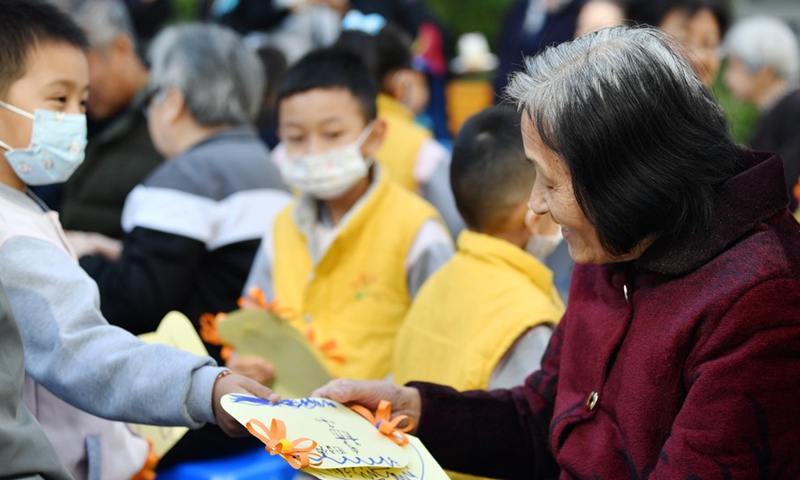China's elderly population aged 60 and over reaches 280m, 19.8% of total
Elderly care services continue advancing in quality, efficiency

Photo: Xinhua
China's elderly population aged 60 and above reached 280.04 million by the end of 2022, accounting for 19.8 percent of the total population, according to the latest report released by the Ministry of Civil Affairs. Demographers say China has paid great attention to addressing challenges brought by the aging population but more can be improved, such as further optimizing China's social security system.
The country's elderly population aged 65 and over reached 209.78 million in 2022, accounting for 14.9 percent of the total population, while the national dependency ratio of the elderly population aged 65 and above hit 21.8 percent, the report titled Communique on the Development of the National Cause for Aging said.
Since China became an aging society at the end of the 20th century, the number and proportion of the elderly population have continued to grow. From 2000 to 2018, the elderly population aged 60 and above increased from 126 million to 249 million, and in 2022, the number reached 280 million. The proportion of elderly population also increased from 10.2 percent in 2000 to 17.9 percent in 2018, and further to 19.8 percent in 2022.
After the founding of the People's Republic of China, there have been three birth peaks. It is expected that the size of the elderly population will reach the peak of 520 million in 2054, Yuan Xin, a professor from the Institute of Population and Development at Nankai University's School of Economics, told the Global Times.
"China's aging rate is faster than that of 15 countries with more than 100 million people in the world. One of the reasons is the drop in the fertility rate," Yuan noted. China's fertility rate is estimated to have dropped to a record low of 1.09 in 2022, data from China Population and Development Research Center showed.
China's pressure in dealing with such a large elderly population is unprecedented, not only in terms of size but also in terms of the rapid increase in growth, Yuan noted.
Since the 18th National Congress of the Communist Party of China, more than 300 documents and plans for the elderly population have been issued at or above the provincial or ministerial level.
Wang Jianjun, former executive deputy director of the Office of the National Working Commission on Aging, has said that prioritizing the health of the elderly, China has seen improvements in providing basic insurance care and has built a complete welfare system to support the aging society.
When it comes to the supply of elderly care services, the report is optimistic, saying in this area it is being "continuously enhanced."
In 2022, the compliance rate of supporting elderly care service facilities in newly built residential areas in cities across the country reached 83.2 percent. Improvement of quality and efficiency among special care hospitals and hospitals for the family of martyrs has been seen after the central budget delineated support for them, the report said.
Data shows that by the end of 2022, there were 387,000 elderly care institutions and facilities of various types across the country, with a total of 8.294 million elderly care beds.
Among them, 41,000 were registered elderly care institutions, an increase of 1.6 percent over the previous year, with 5.183 million beds, an increase of 2.9 percent over the previous year. There are, by the end of 2022, 347,000 community elderly care service institutions and facilities with 3.111 million beds, according to the report.
Additionally, China continues to optimize the establishment of majors related to elderly care services at secondary vocational schools, higher vocational colleges, and higher vocational undergraduate schools.
Also, the National Development and Reform Commission and other departments have introduced several policies and measures to provide relief and support to the elderly care and childcare service industry.
The Ministry of Housing and Urban-Rural Development has guided qualified regions to explore providing vacant public rental housing free of charge to social institutions, so that they can provide meal assistance, day care, rehabilitation care, elderly education and other services for the elderly in the community, according to the report.
Yuan told the Global Times that if society offers more social participation opportunities for the elderly by raising the retirement age, the income status and consumption willingness of the elderly population would be a huge potential market and new economic growth point.
The demographer said supporting facilities and systems would have to be established to support the raising of the retirement age, for example, letting the elderly choose whether to extend their retirement flexibly and if they are okay to do part-time work.